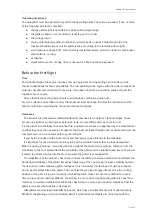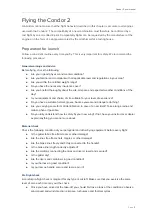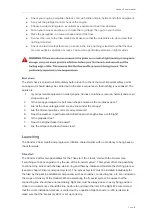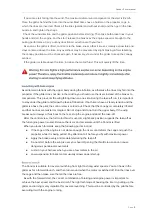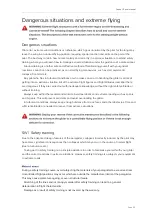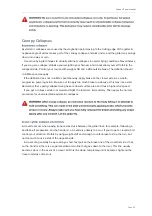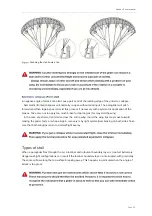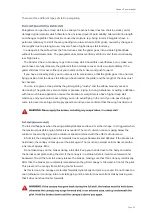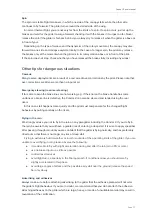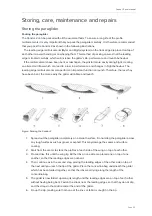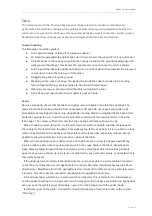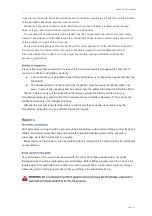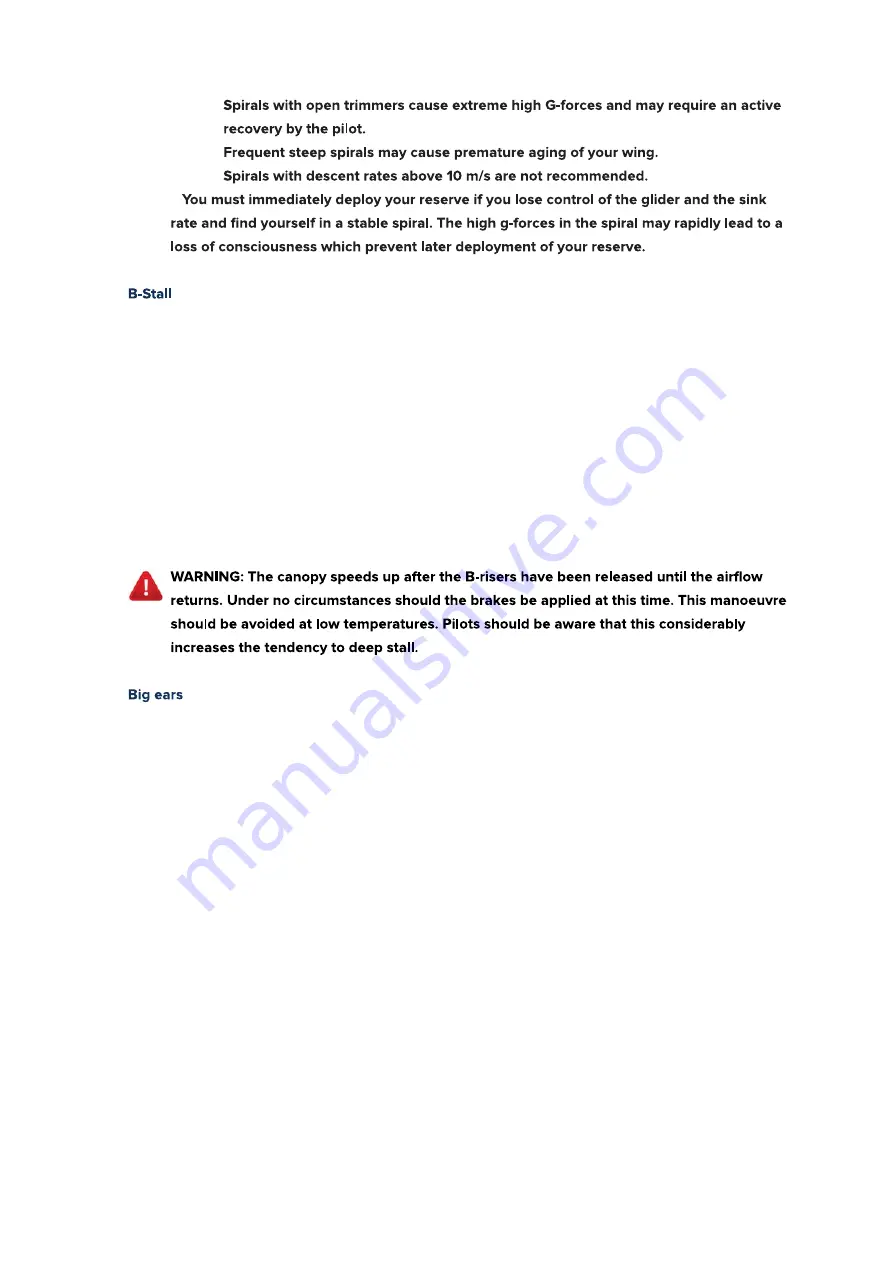
Condor 2 user manual
_____________________________________________________________________________________________________________________________________
●
●
●
In the B-stall, a stall is provoked and the paraglider sinks vertically with a sink rate of approx.
8 m/s. The B-stall is suitable when there is an average ascent rate and little wind.
To enter a B-stall, grasp both of the B-risers on the mallions at the coloured mark. Pull both B-risers
evenly down until the air
fl
ow is broken and the wing goes completely into vertical descent
fl
ight
mode. The B-risers should then be held in this position to ensure a gentle descent.
Pull down the B-risers only until there is no air
fl
ow. If they are pulled down any further, the glider
could go into a horseshoe. Check before and during the B-stall that the airspace beneath you is clear.
For recovery return the B-risers quickly and evenly into their normal position. The glider may go into
a deep stall if they are released too slowly or into a negative spin if not released symmetrically. If you
enter a deep stall, increase the speed by using the speed system or by pulling the A-risers forward.
Big ears are the simplest method for rapid descent and have a sink rate of 3-5m/s. The advantage of
big ears is that the glider continues to
fl
y straight, meaning that a danger area can be avoided. It is
even possible to land using big ears, for example on a top-landing to compensate for the updraft.
The wing-loading increases by the reduction in the wing’s surface area, the wing becomes more
stable against collapses in turbulence. Nevertheless, the air resistance of the wing also increases, and
it
fl
ies more slowly and closer to the stall limit. To counter this and to increase the effectiveness of the
sink, the timmer are generally also used in combination with big ears.
Start the “big ears” manoeuvre by pulling both outer A-lines downwards. This should fold down a
su
ffi
ciently large part of the wing tips that the pilot does not then have to counteract the tendency to
reopen. If the surface area which tucks under is too small (“ears”
fl
apping, high holding forces),
re-open the ears and then pull down and hold the A-lines a little more
fi
rmly.
The brake lines are held steady and the pilot uses weight-shift to steer the paraglider. You can now
descend safely on the stable middle part of the wing. The brakes must not be shortened during the
manoeuvre, e.g. by wrapping the brake line. Do not use the brakes unless you intend to exit big ears.
Once in big ears, you can increase your sink rate and forward speed by opening the trimmer.
Always open the trimmer after entering big ears, never before.
Page 20
Summary of Contents for Condor2
Page 1: ...v1 0 March 2022...
Page 48: ...www gingliders com...





